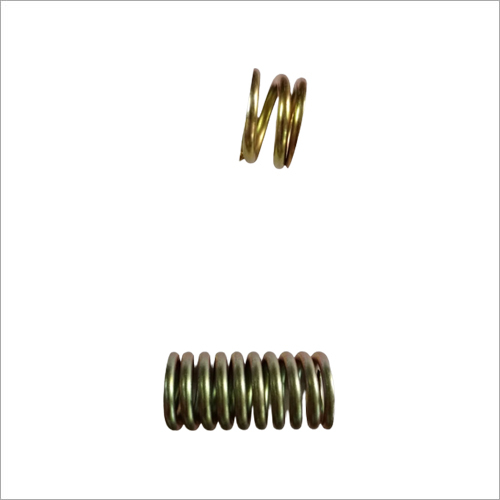Mobile
08045478520Compression Spring
Product Details:
- Color Silver
- Material SS
- Finish Smooth
- Surface Treatment Polished
- Product Type Compression Spring
- For Use In Automotive
- Click to View more
Compression Spring Price And Quantity
- 7 INR/Piece
- 1000 Piece
Compression Spring Product Specifications
- SS
- Silver
- Polished
- Automotive
- Smooth
- Compression Spring
Compression Spring Trade Information
- Cash in Advance (CID), Cheque, Cash on Delivery (COD)
- 100000 Piece Per Month
- 15 Days
- All India
Product Description
The Spring Compression is frequently designed to operate in a bore. In comparison to straight compression springs, it has the benefit of a lower solid height. This spring compression is designed to provide a practically constant spring rate and has a firm height that really is less than that of a regular spring. This spring has coils that nest while deflecting to offer a solid height roughly equivalent to two wire diameters, as well as a changeable pitch to maintain a consistent spring rate.
Spring compression alludes to the most common way of applying power to a spring to decrease its length or make it more smaller. This is normally accomplished by applying a heap or strain to the spring, making it pack or "crush" together.
FAQs of Spring Compression Description:
What Sorts of Springs Can Be Compacted?
Most kinds of curl springs, including compression springs, can be packed. These springs are usually utilized in different applications, from mechanical frameworks to modern hardware.
What is a Compression Spring?
A compression spring is a sort of spring that stores potential energy when packed and delivers it when the heap is eliminated. It is commonly produced using wire twisted into a helical shape.
How could You Pack a Spring?
Spring compression fills different needs:
- Gathering Instruments: Packing springs permits them to be squeezed into restricted spaces during gathering.
- Changing Power: Springs can be packed to change the power they apply in a specific application.
- Energy Capacity: Compacted springs store energy that can be delivered as the spring gets back to its unique length.
How is Spring Compression Estimated?
Spring compression is much of the time estimated as far as the power applied to the spring and the subsequent change long. Taking into account the spring's solidness and its compression characteristics is significant.
What Apparatuses or Gear Are Utilized for Spring Compression?
Spring compression can be accomplished utilizing devices like pressure driven presses, mechanical presses, or manual hand apparatuses explicitly intended for packing springs.

Price:
- 50
- 100
- 200
- 250
- 500
- 1000+




